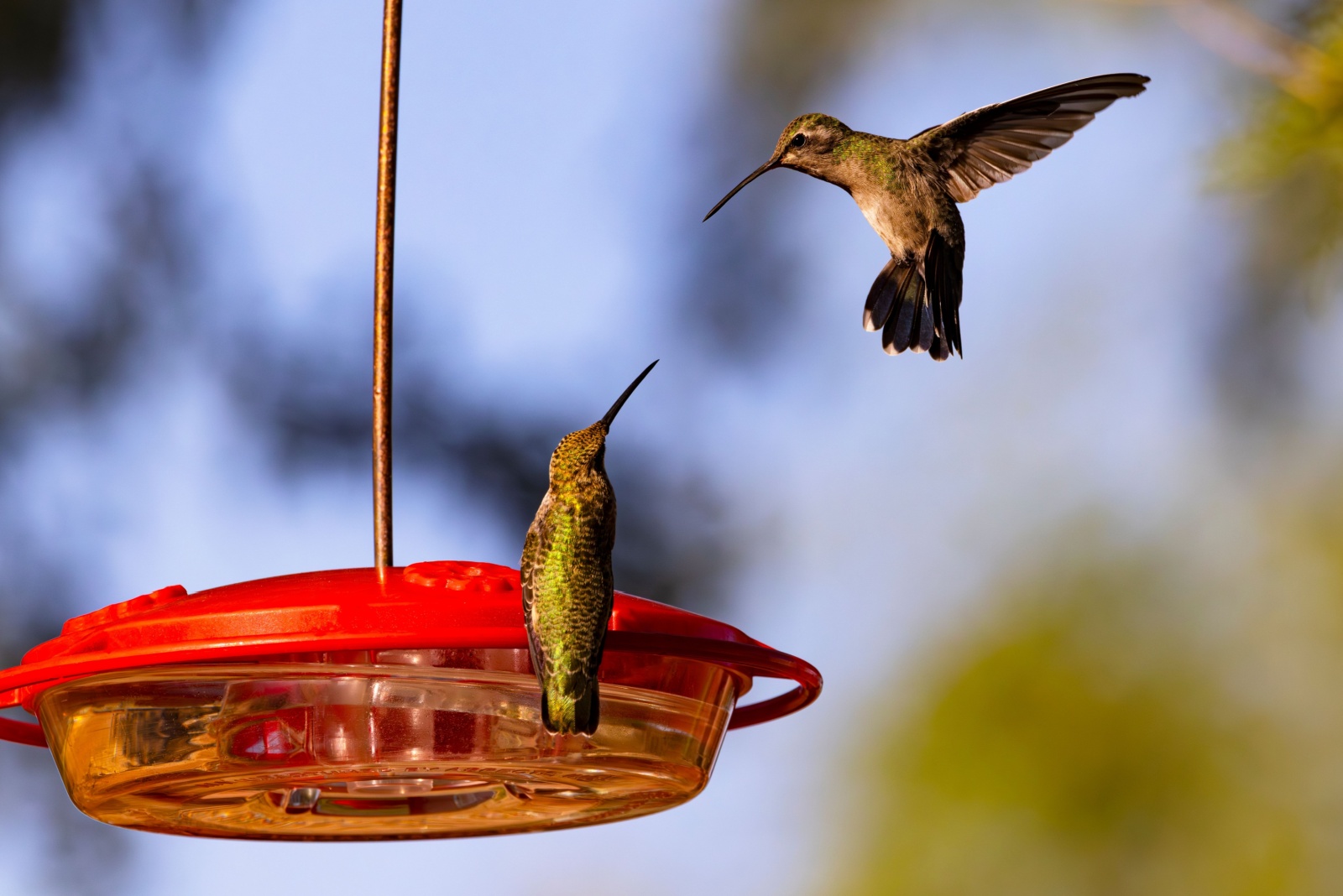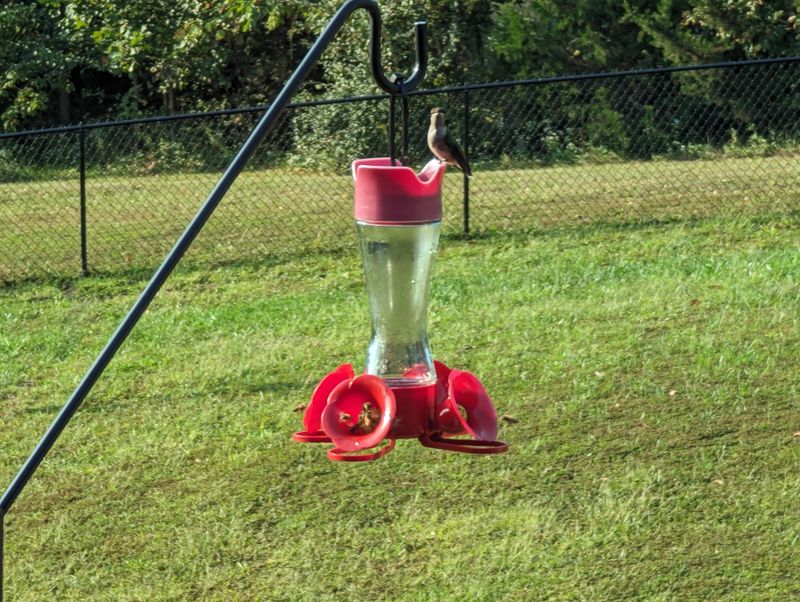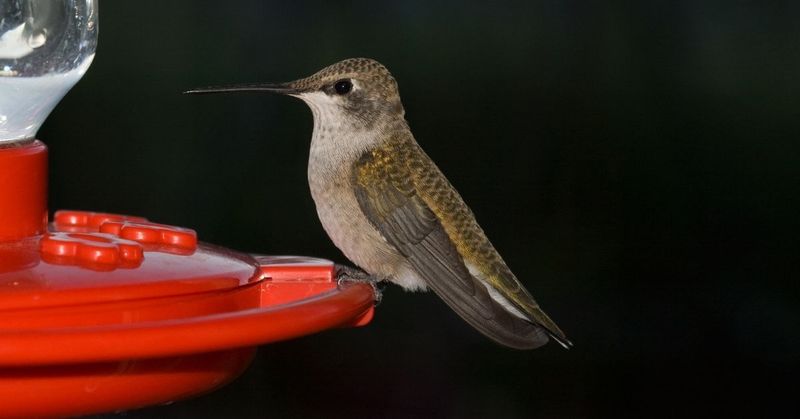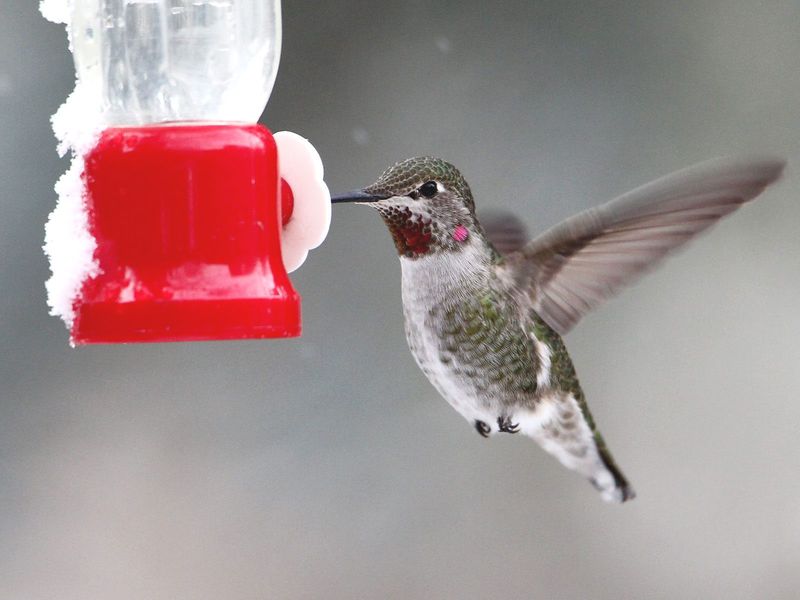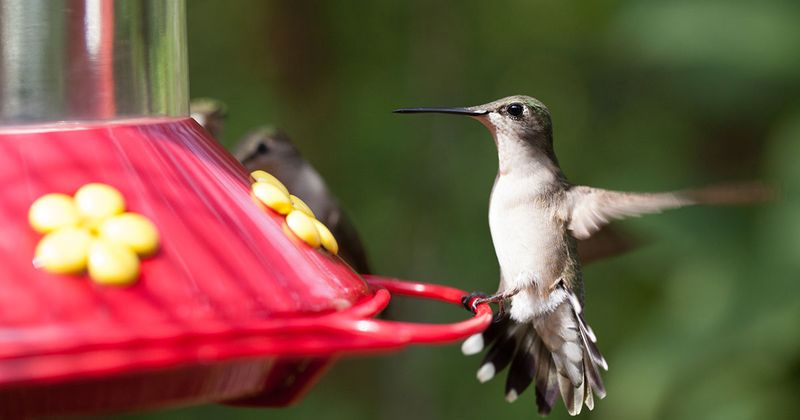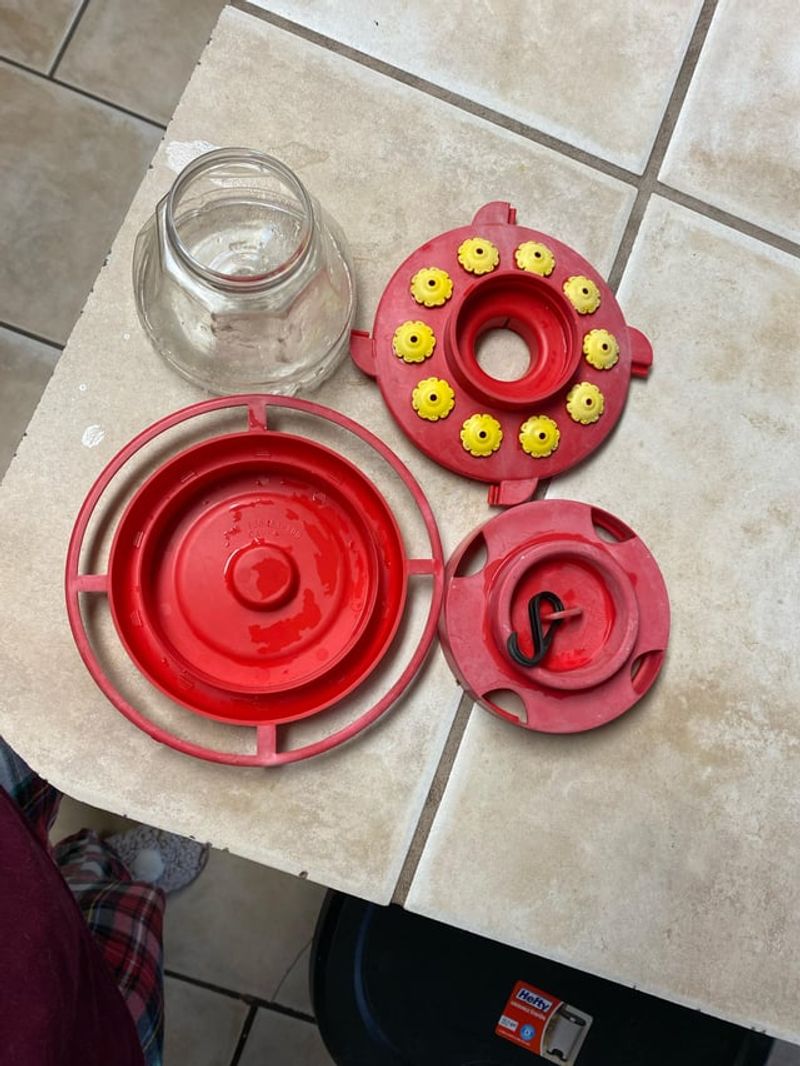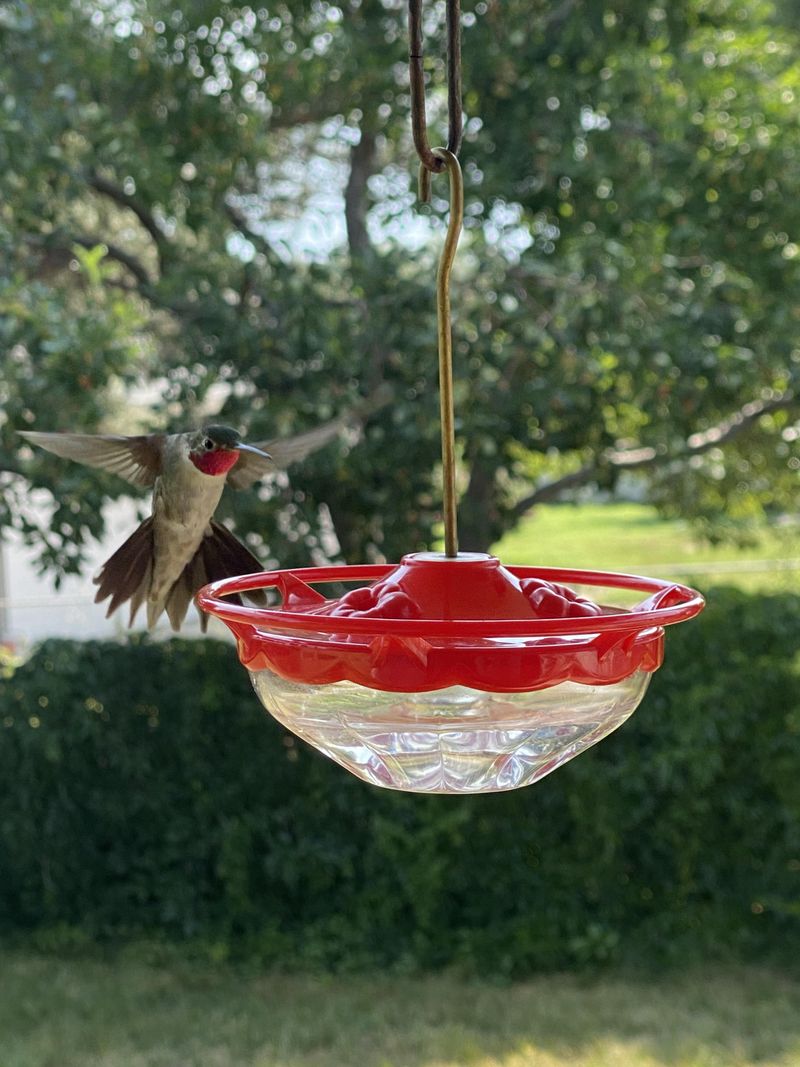Hummingbirds are magical visitors to Utah backyards each year, bringing color and energy to your outdoor space. Knowing when to take down your feeders is crucial for helping these tiny travelers continue their migration safely.
Getting the timing right protects hummingbirds while ensuring they have the fuel they need for their long journey south.
1. Late September To Early October Is The Sweet Spot
Most Utah hummingbirds begin their southward migration in late summer, but some stragglers stick around longer than you might expect. Typically, you can safely remove feeders between late September and early October.
However, keeping them up a bit longer doesn’t hurt the birds or trap them in cold weather. Migration instinct is triggered by daylight changes, not feeder availability, so your feeder won’t confuse them into staying too long.
2. Watch For Stragglers Before Removing Feeders Completely
Even after most hummingbirds have left Utah, a few late migrants may still pass through your area. Rufous hummingbirds, in particular, are known for lingering into October or even early November.
Before taking down your feeder permanently, spend a few days watching for activity. If you haven’t seen a hummingbird in two weeks, it’s probably safe to remove it. Leaving it up a little extra helps exhausted travelers refuel.
3. Cold Nights Mean Frozen Nectar Problems
As autumn progresses, Utah nights get chilly, and nectar can freeze solid in your feeder. Frozen sugar water does no good for hungry hummingbirds who need energy early in the morning.
If temperatures drop below freezing overnight, bring your feeder inside each evening and put it back out at dawn. This extra effort ensures any remaining hummingbirds have access to liquid food when they need it most for warmth and energy.
4. Leaving Feeders Up Won’t Stop Migration Instincts
Many people worry that keeping feeders available will trick hummingbirds into staying too late and getting caught in winter storms. This is actually a myth that science has debunked.
Hummingbirds migrate based on changing daylight hours and internal biological clocks, not food availability. Your feeder serves as a helpful pit stop, not a trap. Birds will leave when nature tells them to, regardless of whether your feeder is full or empty.
5. Clean Your Feeder Thoroughly Before Storing It Away
Once you’ve decided to remove your feeder for the season, proper cleaning is essential before storage. Mold, bacteria, and old nectar residue can build up and damage the feeder over winter.
Take the feeder apart completely and scrub every piece with hot, soapy water and a bottle brush. Rinse thoroughly and let it dry completely before storing in a cool, dry place. Proper maintenance now means your feeder will be ready for next spring’s arrivals.
6. Early Spring Setup Matters Just As Much As Fall Takedown
While knowing when to take feeders down is important, remembering when to put them back up is equally crucial for returning hummingbirds. Utah residents should have feeders ready by mid-April.
Early migrants arrive tired and hungry from their long journey north, desperately needing energy sources. Having your feeder up and filled with fresh nectar can be lifesaving for these early arrivals. Mark your calendar so you don’t forget to welcome them back properly.

